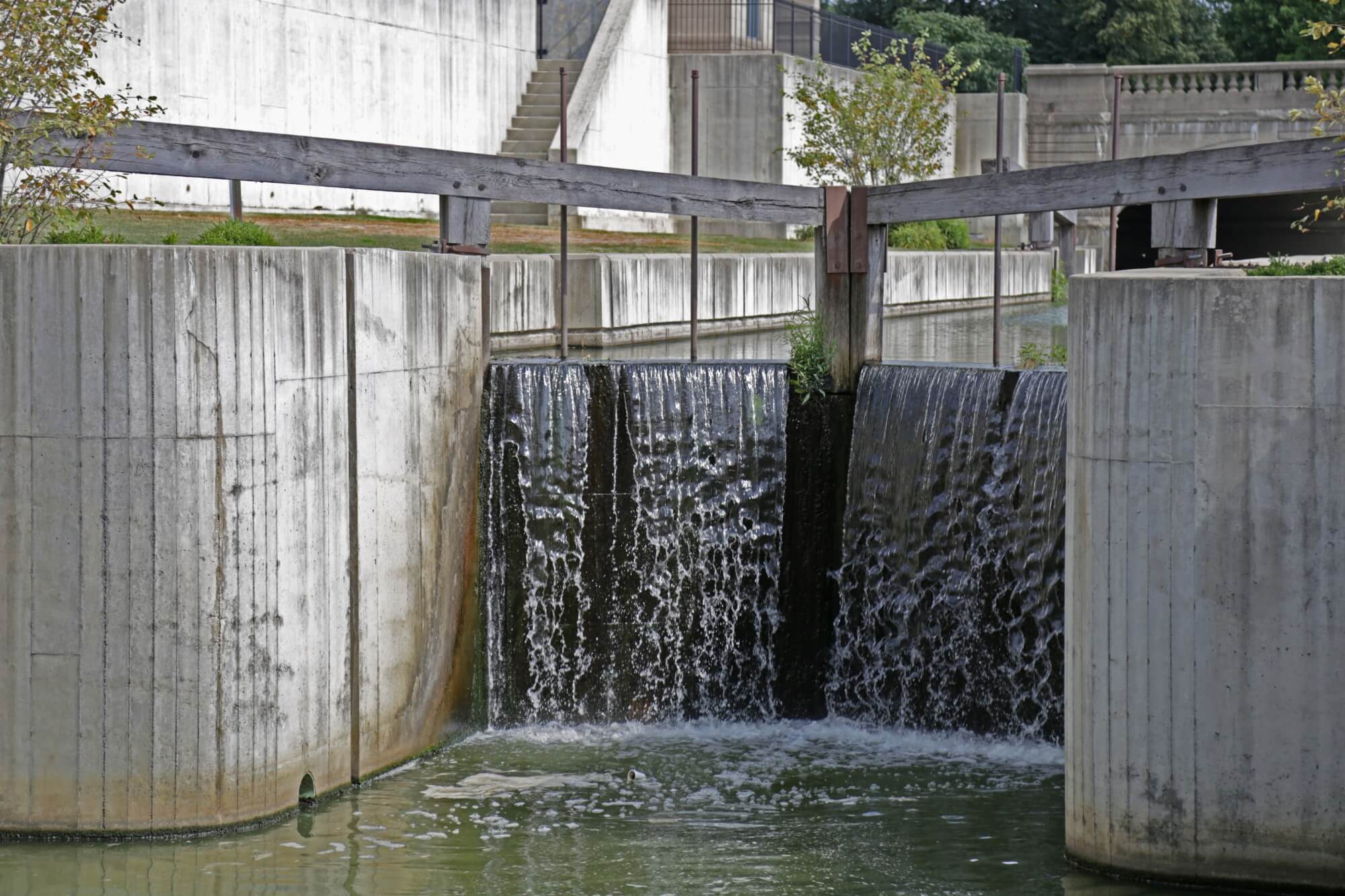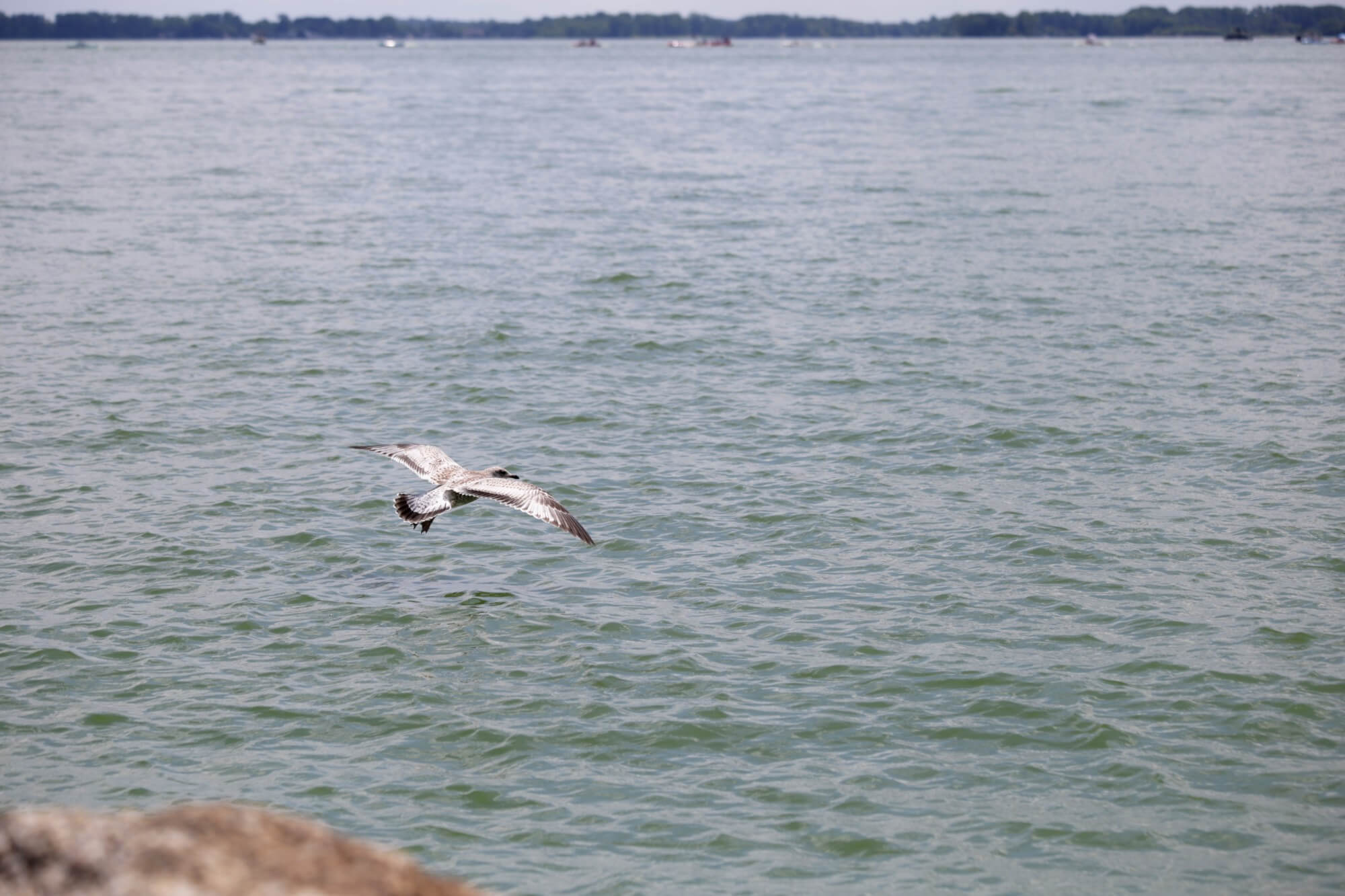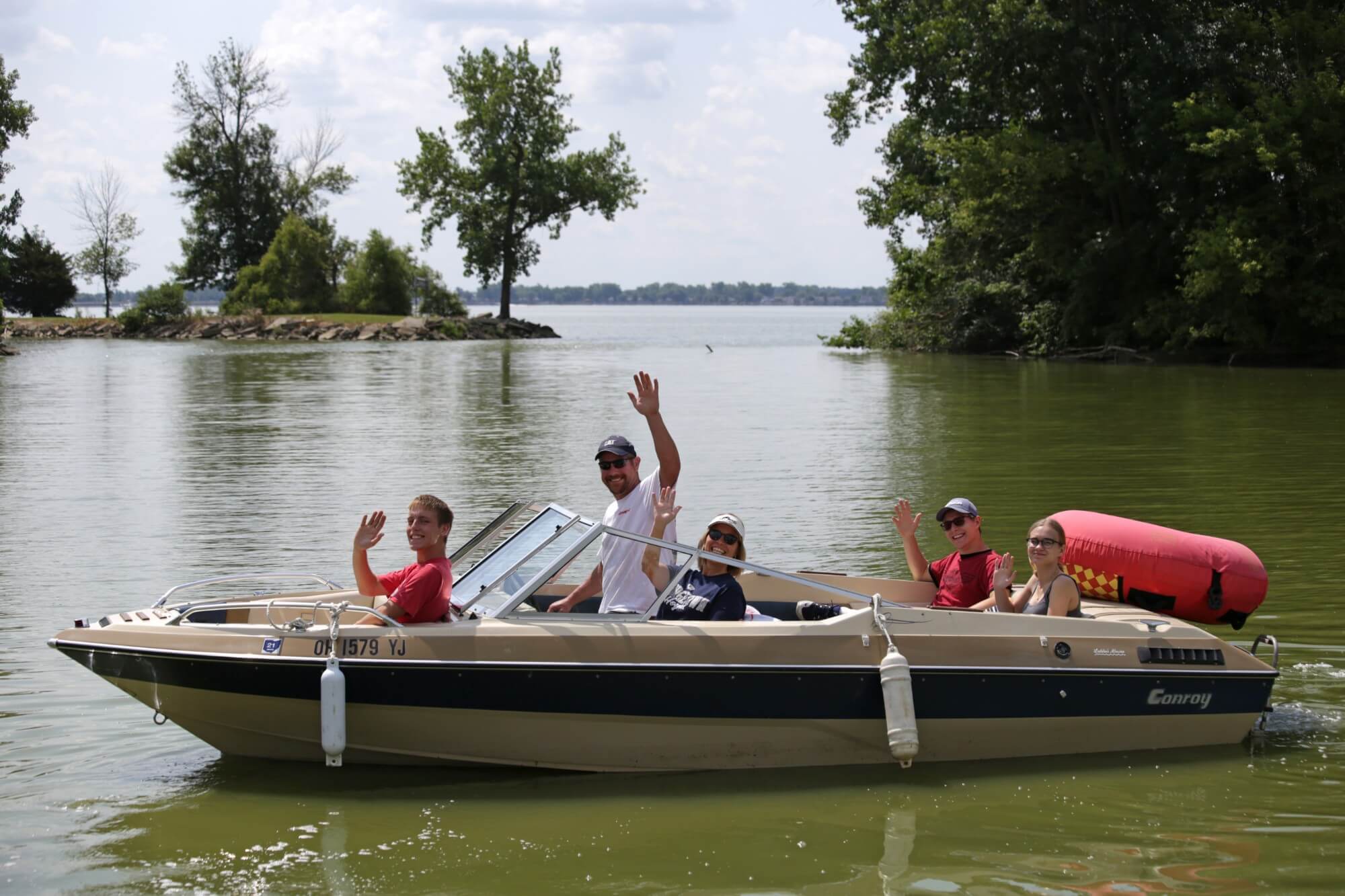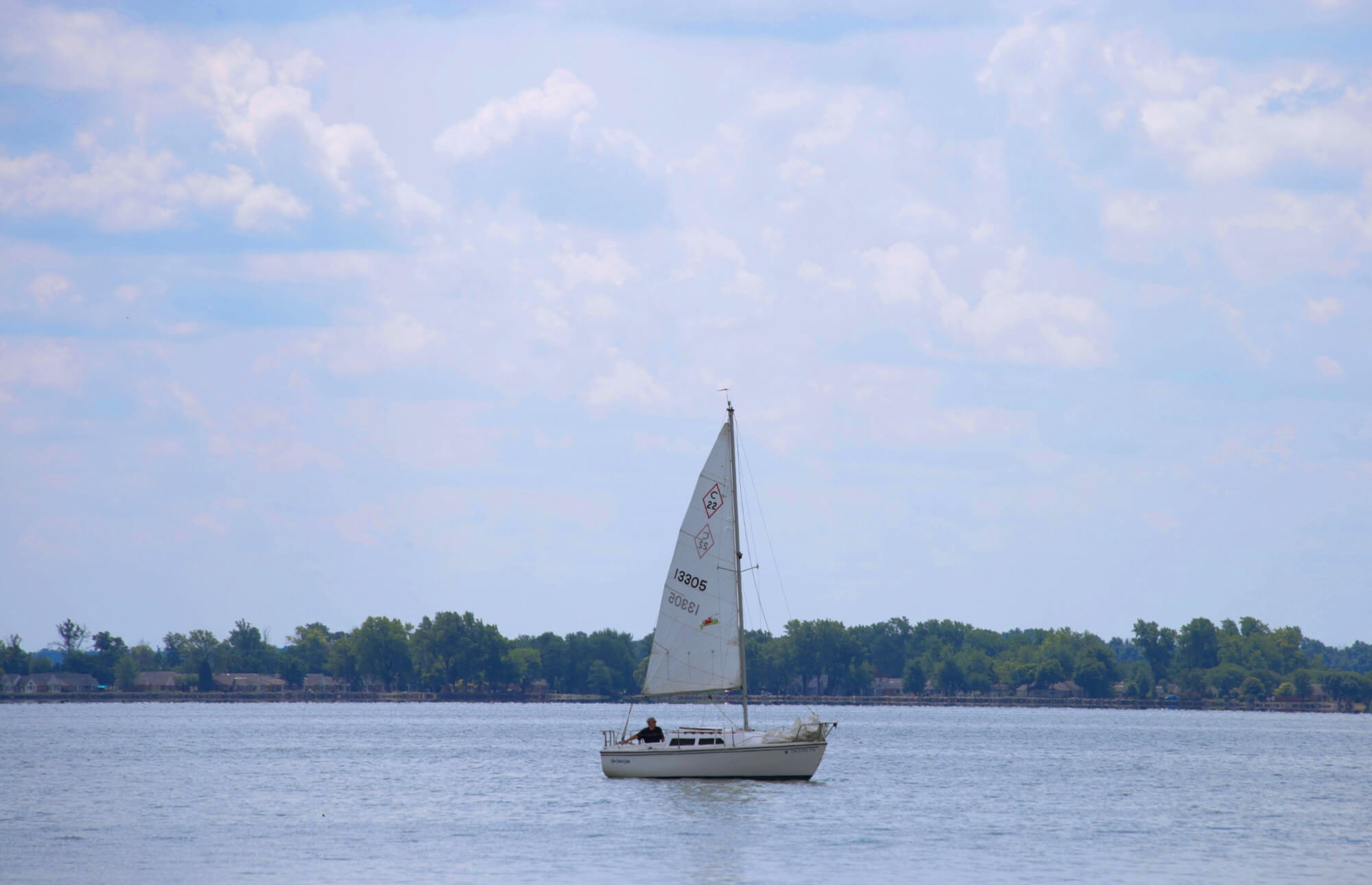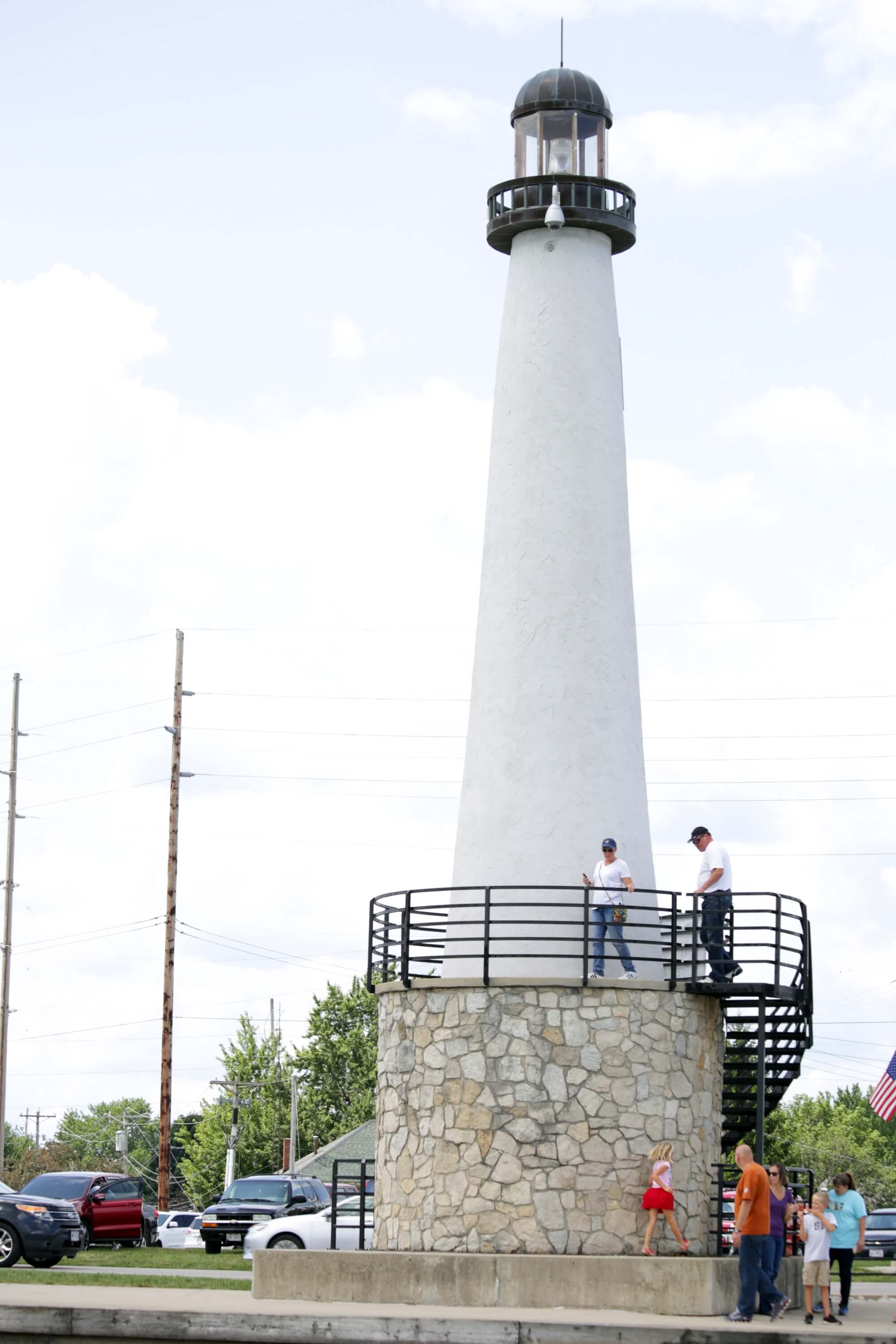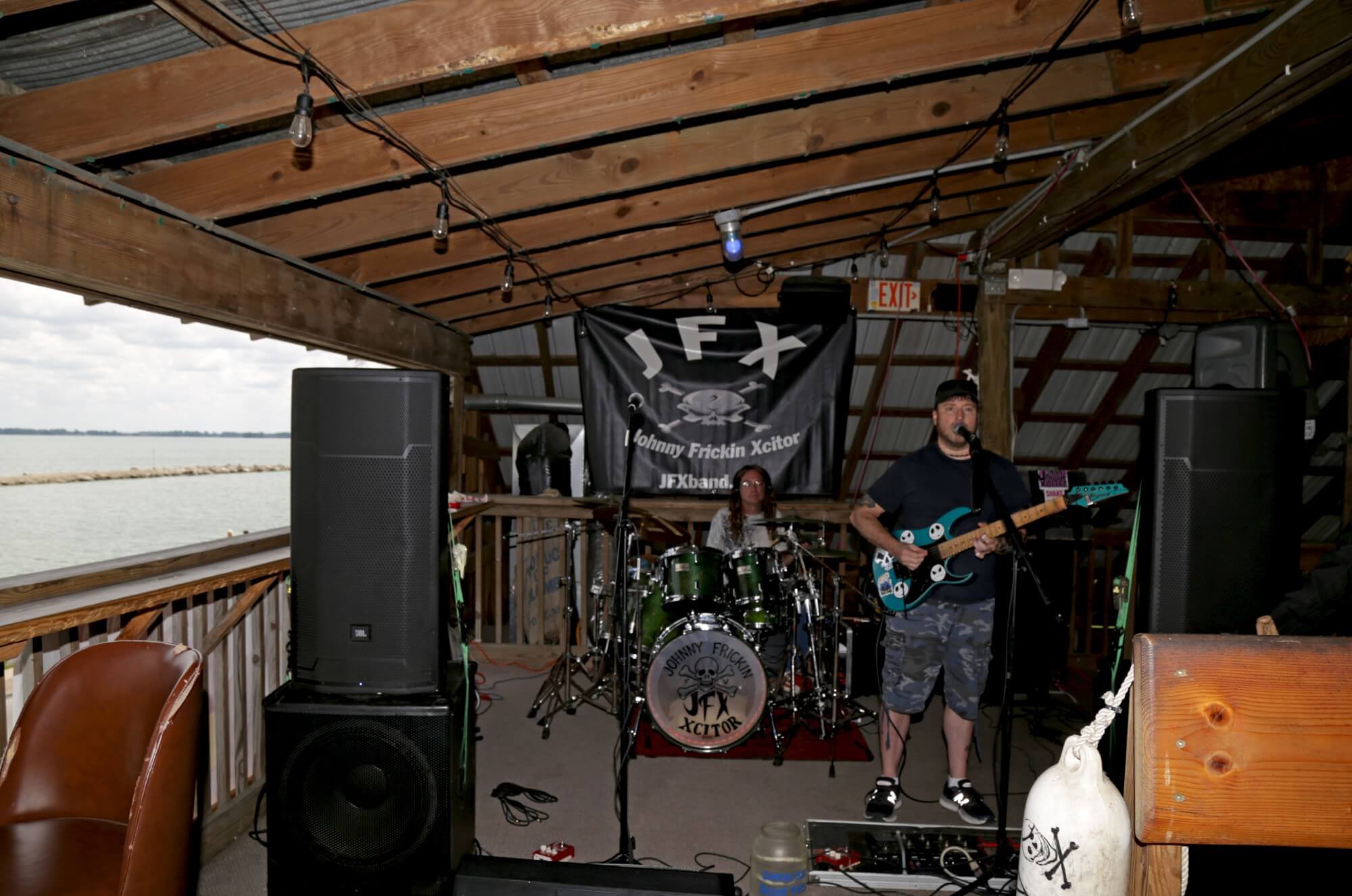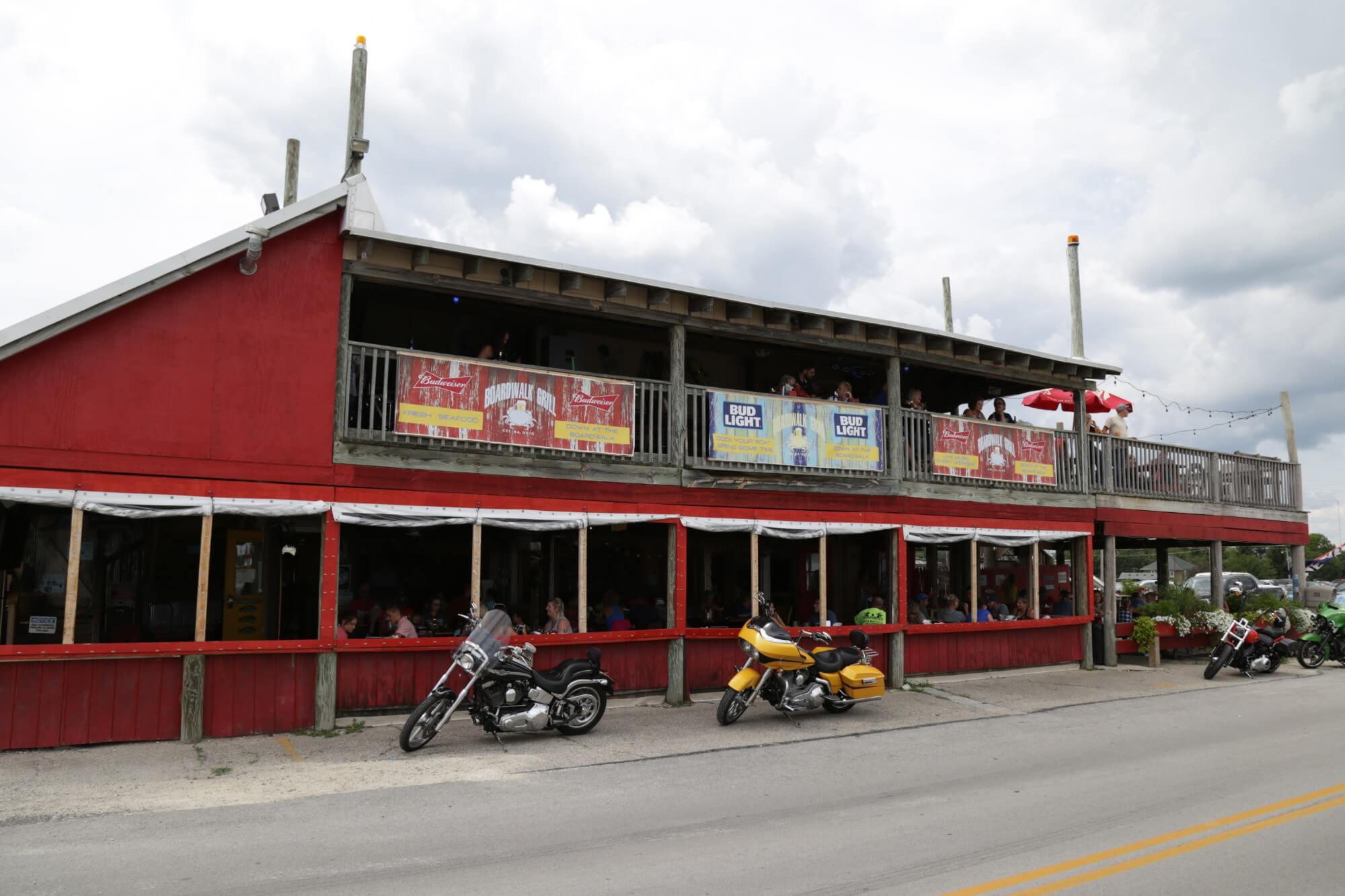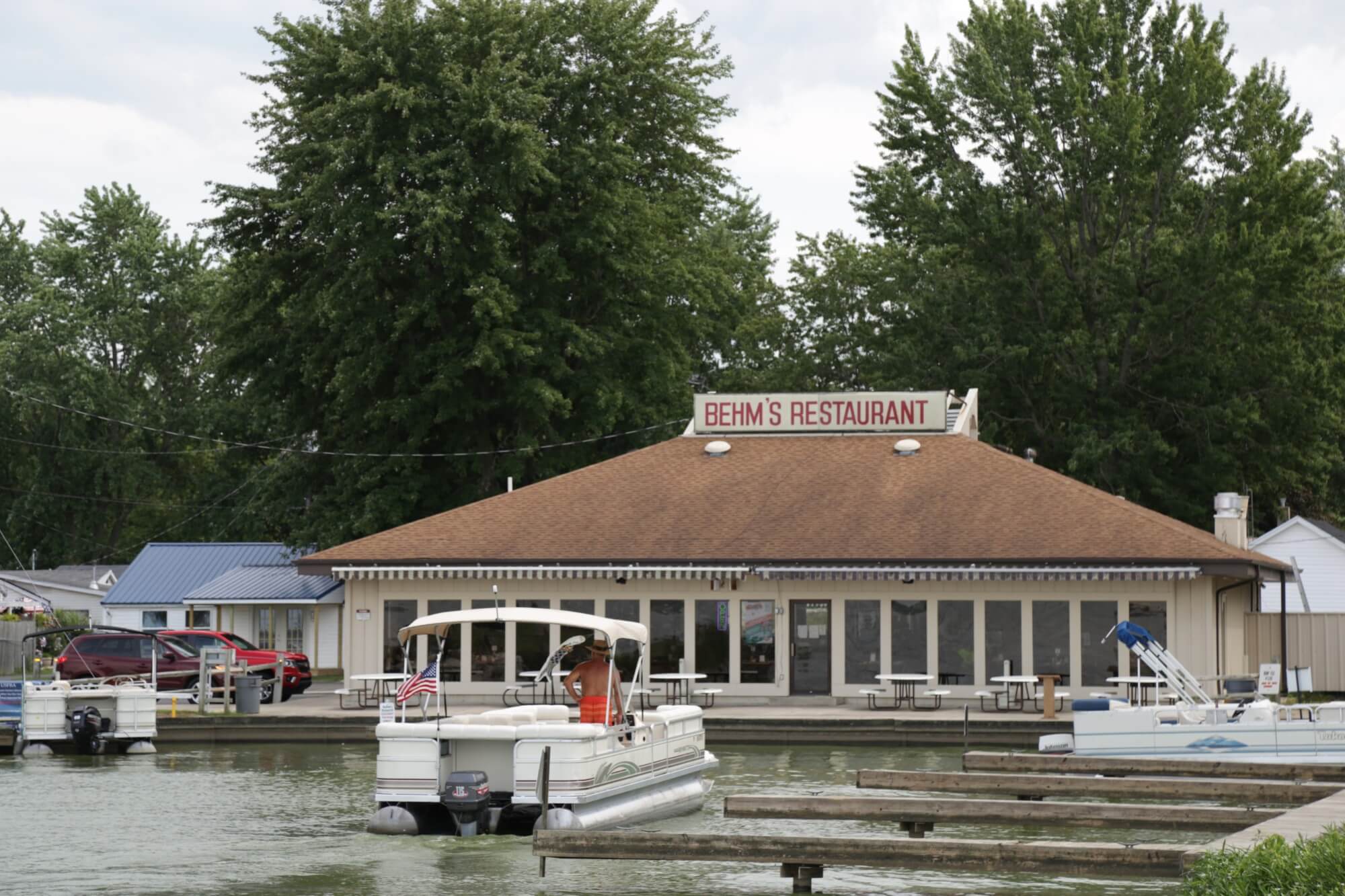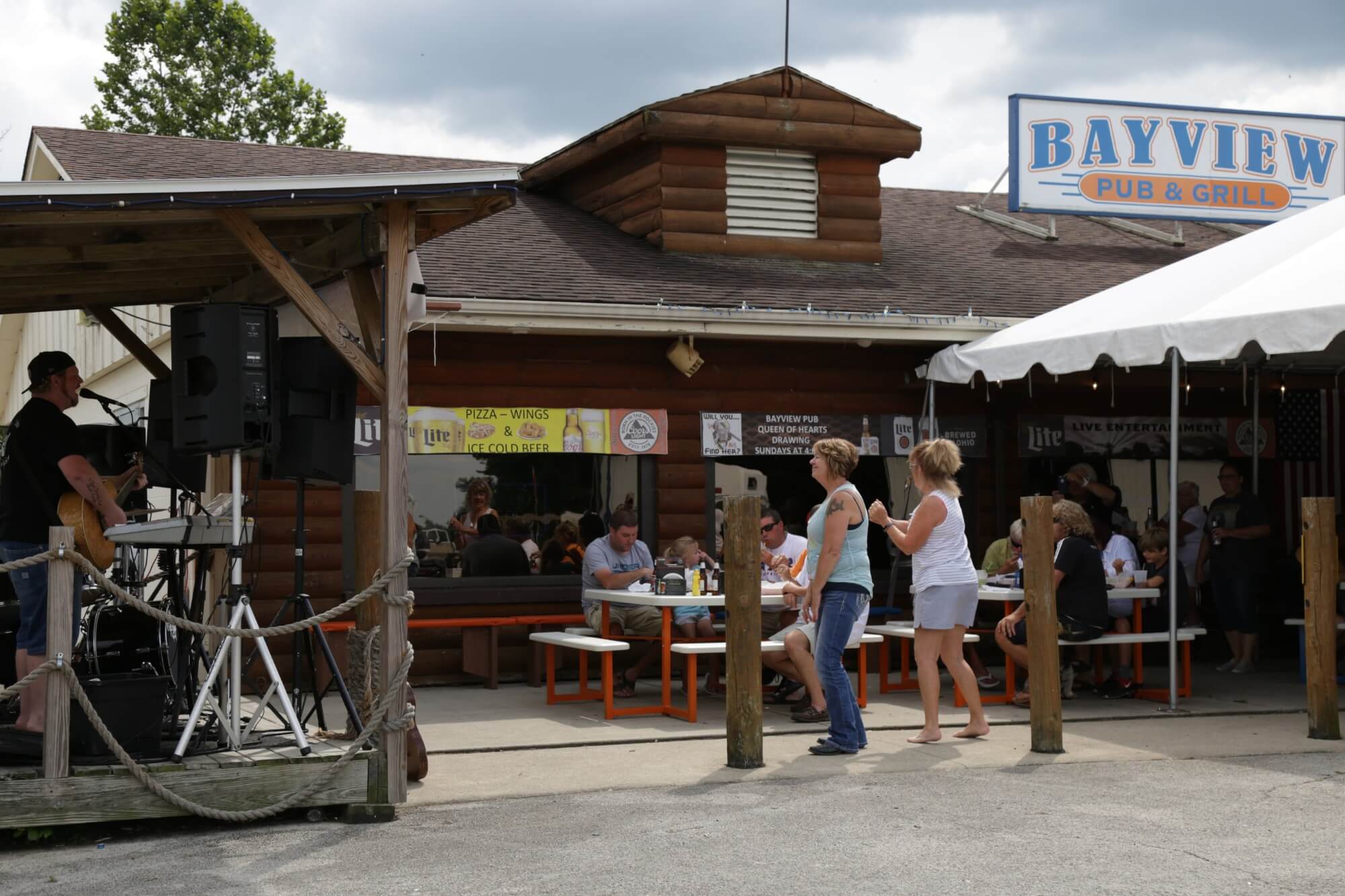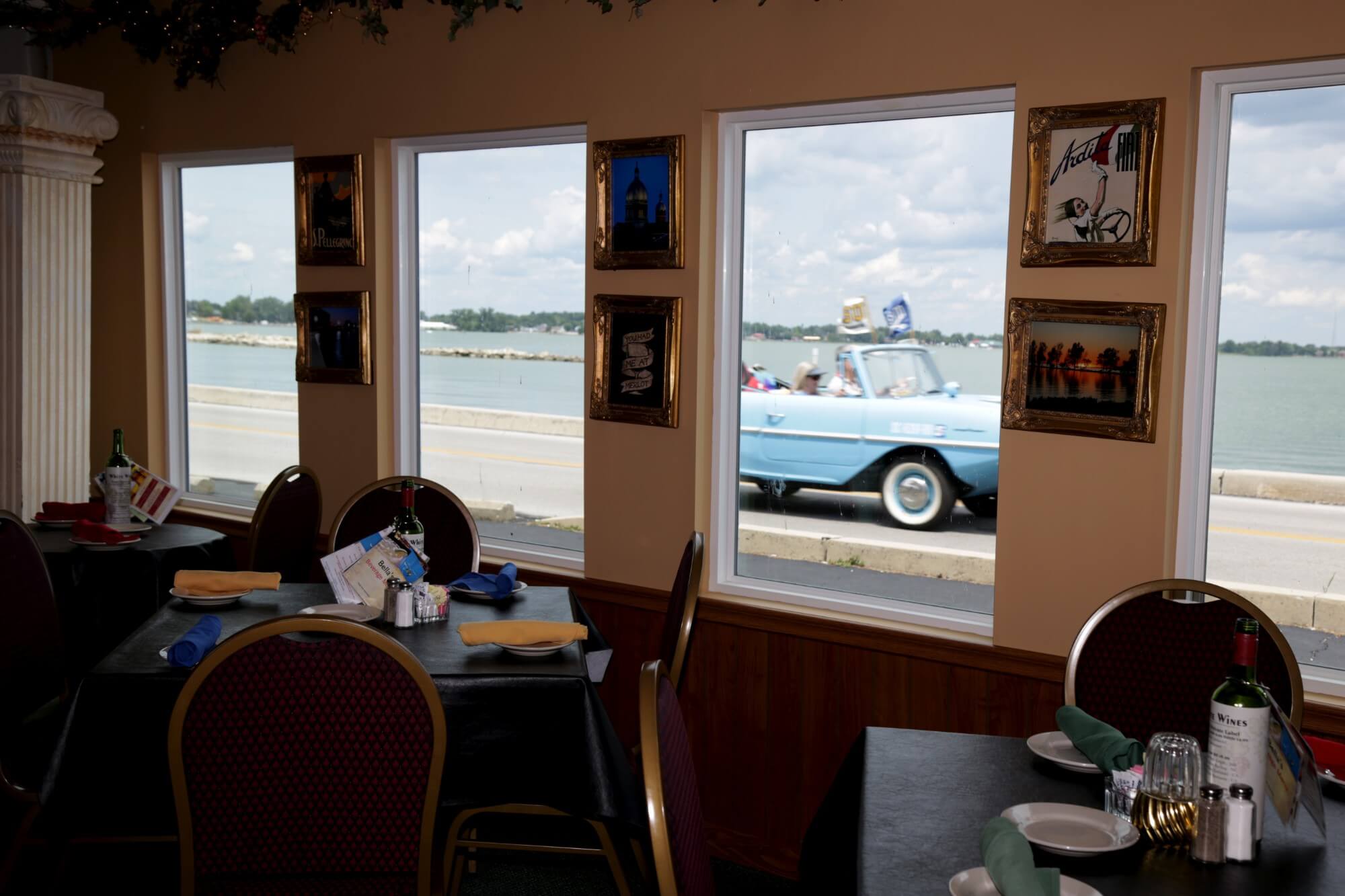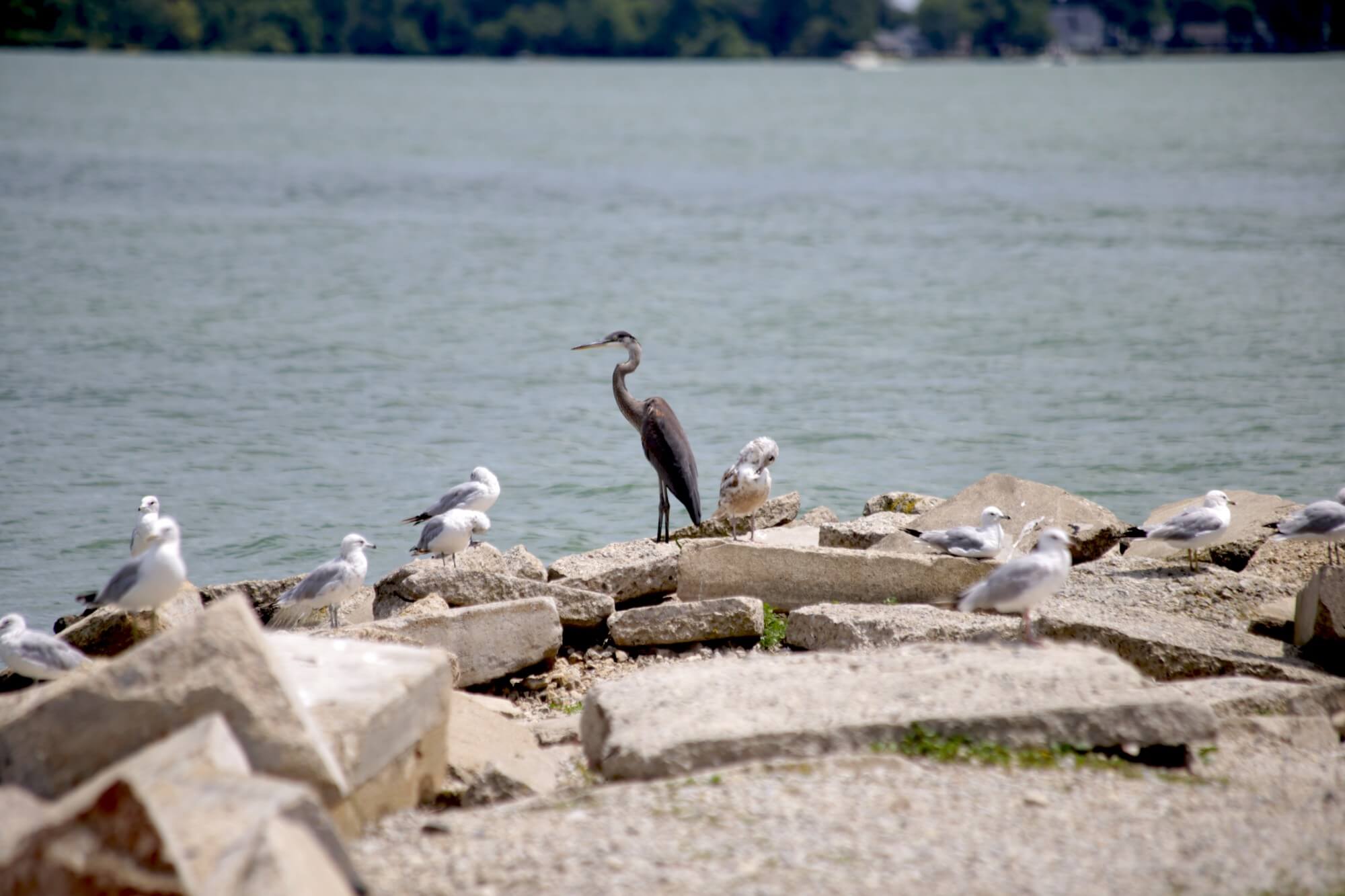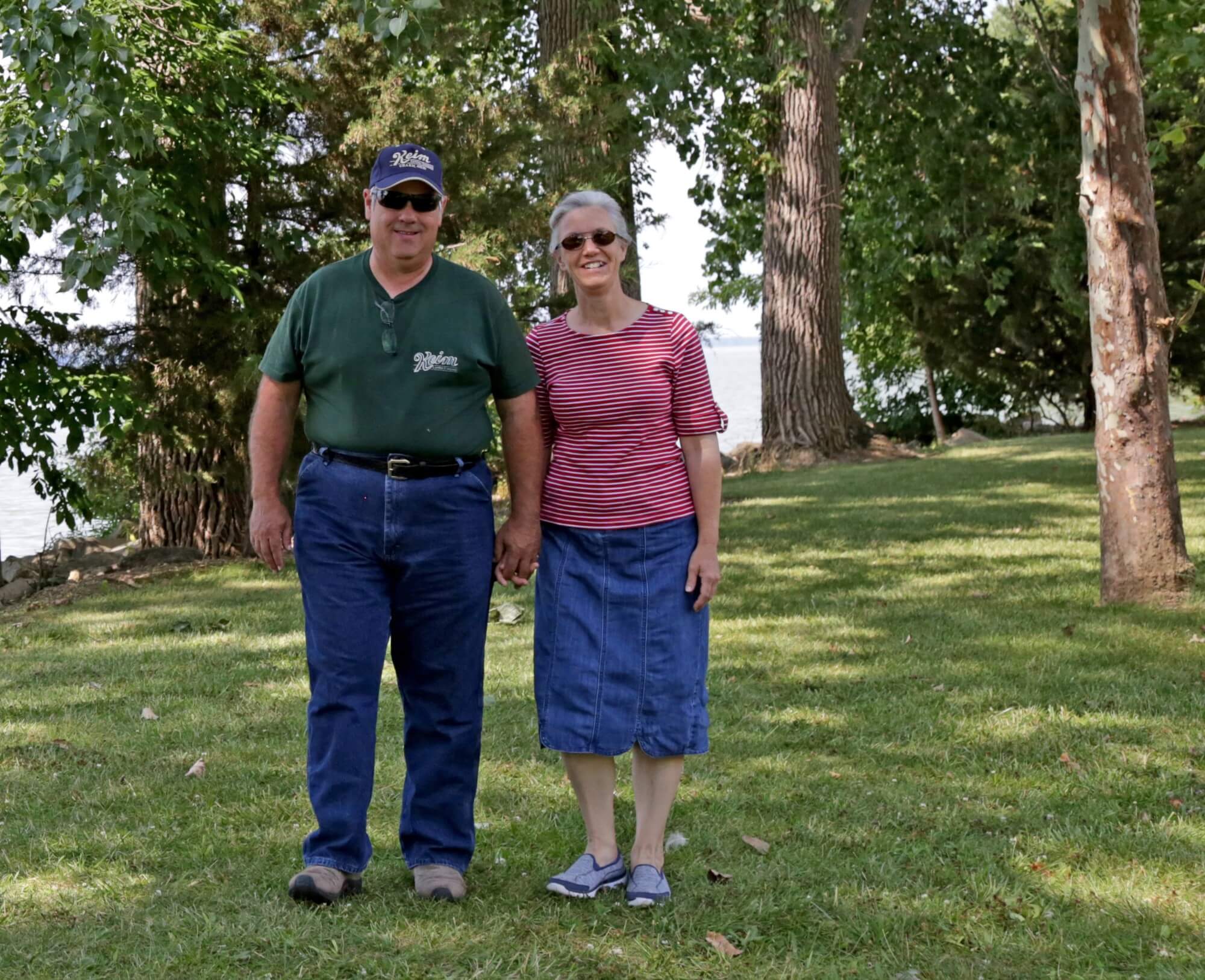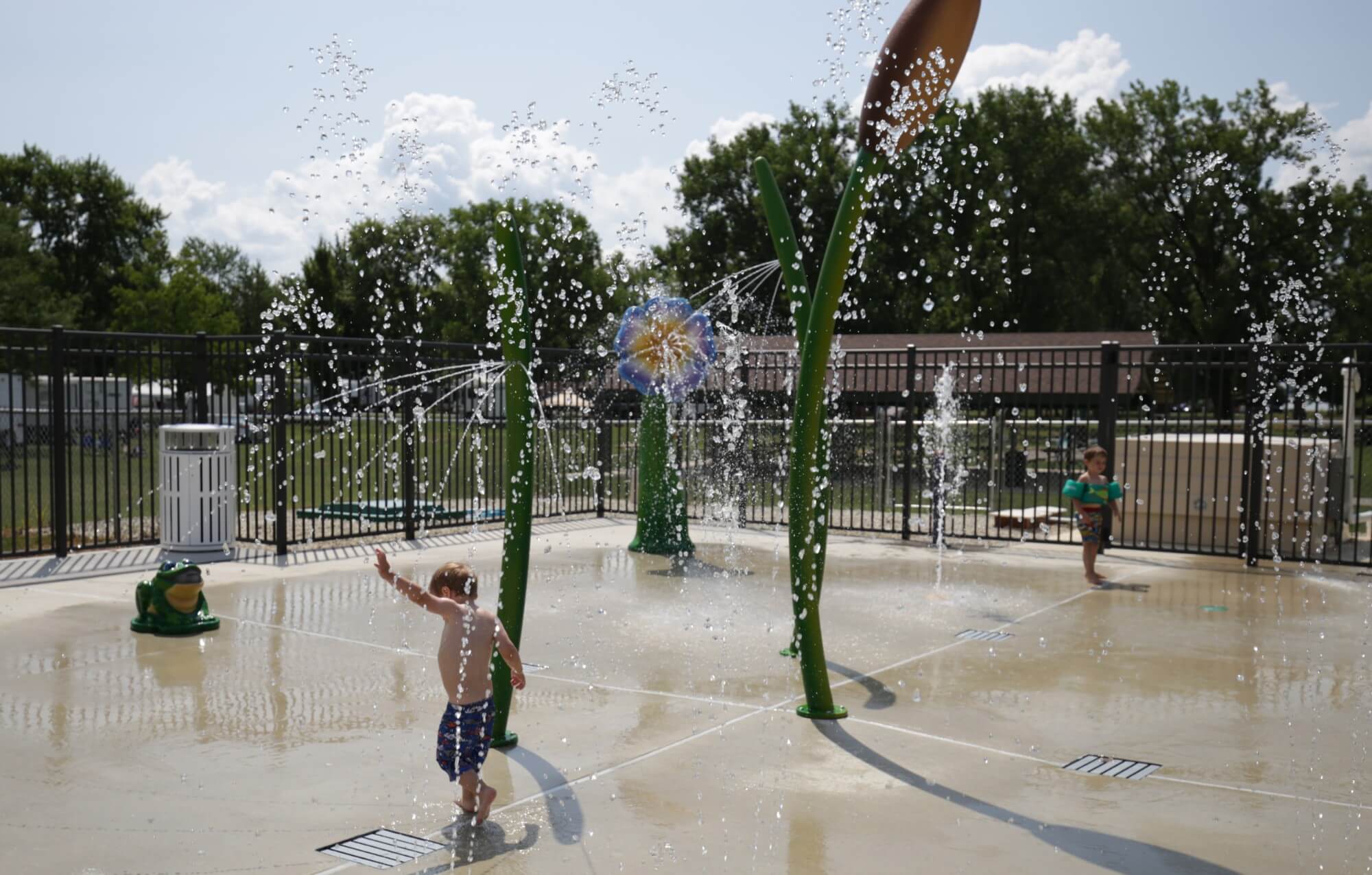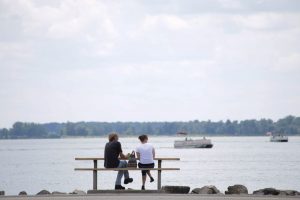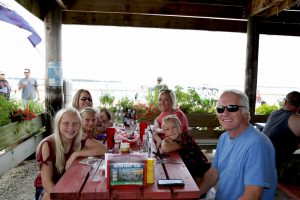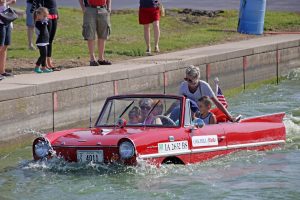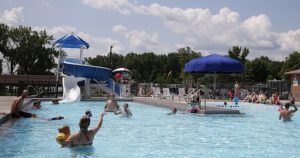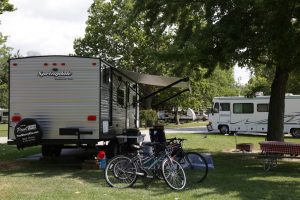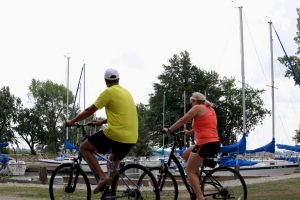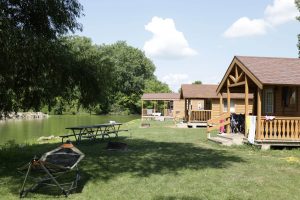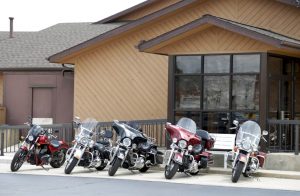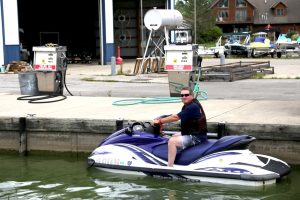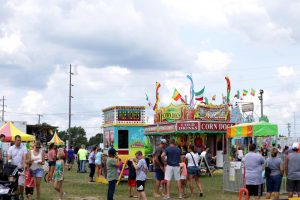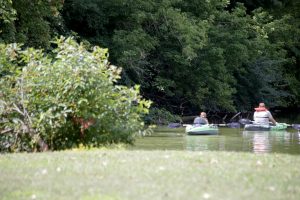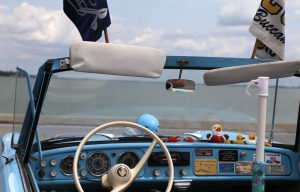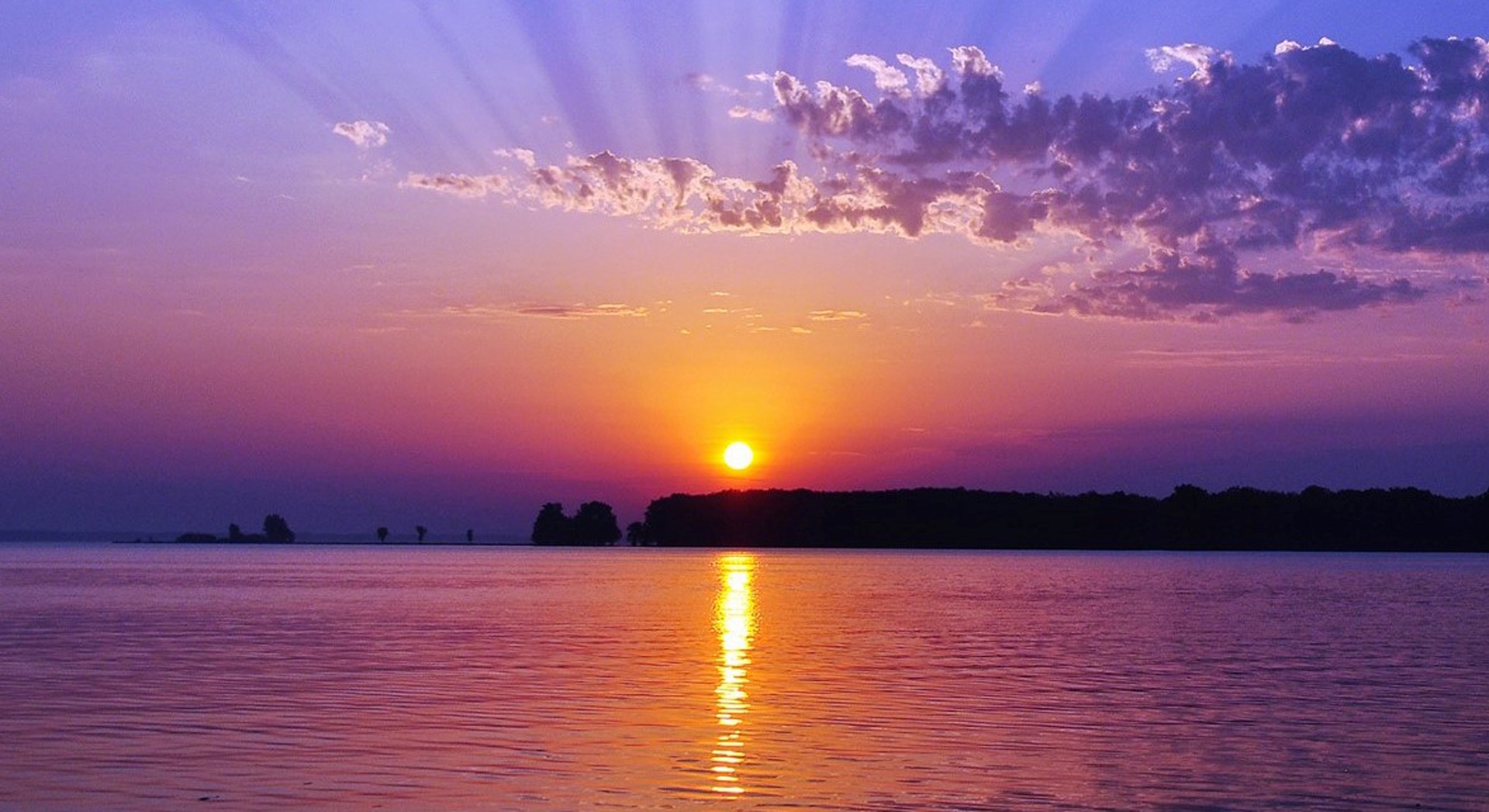
The Aqua Life at Grand Lake St. Marys
Nothing embodies the epic fun and historic oddities at Ohio’s largest inland lake than the record-setting number of Amphicars – known as the cars that swim – dotting the roads and waves between Celina and St. Marys, Ohio.
Grand Lake St. Marys is a place nobody forgets, past or present. From today’s largest gathering of Amphicars to its former, largest roller-coaster in the world, this vacationland has been amazing its visitors for more than a century. It made its mark in history with astounding milestones in key industries, too, helping to transform American culture. These achievements include the earliest documented proof of off-shore oil drilling, and pioneering ventures in ice harvesting, and commercial fishing.
The vibrancy of the lake’s commerce and recreation began to flow in two different directions in the early 1900’s, much like the water in the lake which has a divide where it too flows in two different directions. One feeds the tributaries going to Lake Erie and the other to those eventually reaching the Gulf of Mexico. So with canal towns all but drying up, resort towns began to thrive. And in 1915, the state of Ohio repurposed Grand Lake St. Marys as a public recreation and resort area.
But before diving into the boating life, restaurant and bar scene, and festivities that prevail today along the 52 miles of shoreline and 13,500 acres of water, explore the other side of the bridge in time that led to today’s funland.
The lake’s original purpose, dating back to 1837, was nothing more than to give flow as a reservoir to the Miami & Erie Canal. The lake became one of the largest manually dug lakes in the world; it was built without the use of power equipment. Men used nothing more than mules, sleds, and pickaxes. At the time, there was no electricity or gas powered vehicles and tools.
“Canal workers were paid 30 cents per day and a jigger of whiskey,” said Donna Grube, Executive Director at Auglaize & Mercer Counties Convention & Visitors Bureau. “The whiskey was more for medicinal purposes, as it was thought that alcohol would help fight off sickness such as malaria, considering the heavily wooded and swampy landscape at the time.”
The canal era prospered until the late 1800’s when the railroads proved to be the more efficient mode of transportation. Trains brought masses of people from the big cities to outlying towns for weekend and summer retreats. Nature began to mix with entertainment at Grand Lake St. Marys; a mixture that still exists today. The railroad brought people from Toledo to Dayton to these waters. From the Roaring Twenties to the brink of the Great Depression, a 13-acre amusement park thrived on the lake shore – Gordon State Park. It featured a boardwalk, dance pavilion, a 60-foot Ferris wheel, and The Devil’s Backbone! This wooden roller-coaster was the largest of its kind, standing 90-feet and stretching 2,500 feet long.
“I saw a model of it,” laughed Donna. “And I don’t think it would pass today’s safety standards!”
In addition, pastimes of tossing horseshoes, playing baseball, picnicking, and boat tours filled most folk’s days.
Boat tours around the lake made stops at its half dozen or so small islands, one of which was an island of temptation during the era encroaching Prohibition. It’s where the serious drinking, gambling, and risk-taking commenced. Another island earned its name as Safety Island. It was, and still is, a place for quick refuge when the weather suddenly takes a turn for the worse. In the shallow waters of only 5-7 feet deep, in most places, big waves could erupt in a short time.
“There’s another place out on the water called The Rock Pile. It marks the last oil well with a small aluminum monument in the shape of an oil derrick,” said Donna.
Grand Lake St. Marys had three bustling industries: commercial fishing (which is no longer allowed), ice harvesting (in an age before mechanical refrigeration), and oil fields.
It was long thought that the first offshore oil drilling was done at Caddo Lake in Louisiana in 1911. Prior to that, platforms and piers extended from the shore into the waters of California’s Summerland oil fields. However, the earliest recorded documents of offshore drilling prove that it began at Grand Lake St. Marys as early as 1891. Before that, nobody knew how to drill in water. Drilling was done by pounding pipe down and making a hole. But in water, there was too much resistance, so drillers at Grand Lake St. Marys figured out that they could put down a large pipe to suck water out of it until the lake bed was exposed at the bottom of the pipe. A smaller pipe was inserted and pounded into the earth below. Today, area petroleum conferences routinely take field trips to the lake to see where that first offshore oil drilling occurred.
Boating adventures today include these obscure traces of the lake’s history but mainly it’s all about fun in the sun.
There are several boaters’ beaches on the lake where it gets shallow with sandbars. As many as 50 boats may be seen congregating in these areas. Once the anchors are down, dozens of strangers-turned-friends stand and talk on board or in the water. Kids swim, and some of the pontoons even have slides that send people flying into the air before splashing into the water below, an activity usually accompanied by howling laughter.
Most boats are pontoons because of the shallow water. But there is no horsepower limit for their motors, so tubing on the lake is very popular. There are speed boats too, but because this is a gathering place, pontoons are where the party is at.
“It’s the best of both worlds,” said Donna. “People can go tubing or tripooning.”
Tripooning is the pastime of connecting three pontoon boats together to create a self-made island. The mass helps reduce the waviness. There are also numerous public boat ramps providing easy access around the lake. In addition, six marinas offer refueling and shopping for the essentials. They also service, sell, and rent watercraft. Other watery pastimes include water skiing, wakeboarding, paddle boarding, kayaking, canoeing, jet skiing, and sailing.
“Sailing is a lot of work, but to the spectator it looks like it’s so relaxing and free,” said Donna.
St. Marys Boat Club – a private sailing club – hosts regattas as often as twice per week during summer. There’s usually one during a weekday evening and one on Saturdays.
“Watching the sailboats out there is so beautiful,” Donna continued. “It’s nice for the public to see the big beautiful sails while they race and make turns.”
Another beautiful sight around the lake is its three lighthouses – an unusual thing for an inland lake. The first was built in 1923 and is a smaller replica of the original beacon in the English Channel. It’s called the Northwoods Lighthouse and is on the north side of the lake. The Behm’s Lighthouse is an alluring structure created in 2003 on the south shore nearby Behm’s Restaurant. The Rotary Lighthouse is a 40-foot working lighthouse complete with an observation deck. It is located on the western shore in Celina off of U.S. 127.
The lighthouses are great points of reference, day or night, and especially during special events like the Boat Poker Runs. These events are a great way to bar hop on the water to collect cards until a poker hand is formed. For land lovers, there’s a Bicycle Poker Run as well. Another worthwile venture around the lake is The Barstool Open. This is a Putt-Putt Golf tournament with an innovative hole at many of the bars and restaurants along the shoreline. Participants can boat or drive from one mini golf hole to another.
“In the morning, people are pretty serious about their golfing, but after they’ve been to a few places, that changes,” laughed Donna. “Teams usually dress together for fun and decorate their boat, too.”
The most peculiar sight on the lake is seen every July during the Celina Lake festival at Lake Shore Park. It features the most amphicars in any one place at any one time on Earth.
These amphibious automobiles can drive on land, go straight into the water, and then operate as a boat without ever stopping. Only 3,878 Amphicars were built in Germany from 1961 to 1968. Of those cars, 3,046 were imported into the United States. It is believed that there are less than 600 seaworthy amphicars still in existence today.
The Amphicar has a top speed of seven mph on water and 70 mph on land. It’s moved in the water by its twin nylon propellers. A special two-part land-and-water transmission, built by Hermes (makers of the Porsche transmission), allows the wheels and propellers to be operated either independently or simultaneously. The “land transmission” is a 4-speed-plus-reverse unit similar to those found in the old Volkswagen Beetles. The “water transmission” is a 2-speed offering unique to the Amphicar, featuring single forward and reverse gears. In the water, the front wheels act as rudders.
Their official festival appearances include a Swim-In, where the entire contingent of Amphicar owners partake in the Grand Parade. Festival-goers may also have an opportunity to ride in these strange automobiles. All of the Amphicars are convertibles and were originally offered in only 4 colors: Beach White, Regatta Red, Lagoon Blue, and Fjord Green (Aqua). Many today have been customized with accessories like pink flamingos and rubber duckies, adding to the novelty of the occasion.
The festival usually features a variety of entertainment such as the Duct Tape boat race, the cruise-in, carnival rides, carnival-type food, craft vendors galore, a fishing derby, pontoon rides, corn-hole, and volleyball tournaments. It also hosts live musical acts and a fabulous fireworks show over the lake.
A few other popular events around the lake are Freedom Days, The Grand Lake Marathon, and Summer Concert Series. Freedom Days is around the Fourth of July. It is held to honor servicemen and women and includes a nice ceremony for veterans. Plus, there are fireworks, beer, and rides. The Grand Lake Marathon attracts runners from up to 20 states and several countries, and the Summer Concert Series offers free music at the Amphitheater. Visitors lounge in their boats or out on the lawn to enjoy a variety of country, rock, and concert bands.
“Music is big around the lake,” said Donna.
In fact, music is so big that the Auglaize & Mercer Counties Convention & Visitors Bureau created The Summer Spotlight, which lasts from mid-May to Labor Day. Every band, musician, and event on the lake is posted so when people are in town and wonder who’s playing where, they can see more at SeeMore.Org.
Along the lake there are about a dozen different restaurants, bars, and proud dive-bars that have dock access and a great atmosphere to go with the entertainment.
“There’s a nice variety of places to stop,” said Donna. “The general feel for the area is that it’s laid back, not a lot of pretense. Nobody puts on airs, you just go and enjoy your food and beverage of choice.”
There are over a dozen of these places to choose from, each with its own personality.
If seafood is calling, along with the one of the best views of the lake, the Boardwalk Grill is the place for both. With its signature red-painted, weathered, wood exterior, it looks like it was imported from the East Coast. Inside and out, it’s cozy and has plenty of space to roam. The gentle lake breeze is felt on the upper deck as well as down below.
It’s It Restaurant is a laid back and tiny place tucked into the middle of nowhere. Customers can enjoy its dock access from a channel connecting to the lake. With its 1960’s rock and roll theme and tasty burgers named after rock artists, they are best-known for their wings. Just don’t get lost in the psychedelic beads.
Behm’s Landing is tucked behind Behm’s Lighthouse. Their home-cooked menu offers a variety of recipes, ranging from stuffed cabbage rolls to fresh walleye. People can enjoy the nice view of the lake and lighthouse from the large glass windows, or from the tables outside.
Bayview Pub & Grille has a log-cabin exterior and spacious outdoor patio. This place is well-known for hosting a variety of great live music. Plus, there’s plenty of pavement to serve as a dance floor.
“Music is their hook,” said Donna. “They bring in a lot of great bands and singers.”
Bella’s Italian Restaurant is a more upscale but casual venue. It has a wide view of the lake and lots of windows to take advantage of their location. Inside are marble Roman columns and other decor that puts a more romantic vibe into the air. One popular after dinner pastime here is to take a stroll to the spillway.
“When you’re in flat land like we are, it’s the closest thing you’re going to get to a waterfall,” chuckled Donna.
The spillway is a place to bring a camera to catch wildlife. Great Blue Herons and other waterfowl will be dining on the catch of the day.
The best fishing areas are closely held secrets. There are about 100 fishing tournaments at the lake each year. Most of those competitors fish from their boats, primarily in the channels. Shore fishing is popular, too, especially around marinas and places where the water is shallower with low growth, inviting fish to congregate. There are also several bait shops. The Outdoorsman on the northeast side of the lake is one of the most popular. They are known for passing along advice as to where the fish are biting and what lures and things seem to be in favor at the moment.
“It’s one of the best crappie fishing lakes anywhere around,” said Donna. “There are a lot of bass tournaments. Catfish are always biting. Ice fishing in winter is big. There’s even a crazy carp derby.”
Both the pier on the east bank and an area on the west bank provide fishing access for visitors with disabilities. The lake is good for a variety of catches. These include walleye, bass, perch, crappie, bluegill, and catfish to name some. The lake is also home to one of Ohio’s state fish hatcheries. They hatch and raise fish to stock lakes and rivers statewide. A drive along the northeast side of the lake will feature about 20 different ponds for the fish being raised at the hatchery.
Because the fishing is so good, Grand Lake St. Marys is a big destination for birdwatchers. The lake is along the migration routes for a wide variety of birds, including egrets, loons, osprey, herons, swans, pelicans, ducks, geese, and bald eagles, just to name a few. Birds are attracted because of the vast preserved lands and plentiful food sources. There are three wetlands around the lake to filter water coming into it now in order to improve water quality. These shallow green spaces are ideal for waterfowl to hunt frogs, fish, and other things. Two of the wetlands have walking paths where visitors are likely to see eagles’ nests and a blue heron rookery, which is a fascinating site.
“There is a good balance between the development around the lake and the state park reserved lands, so the wildlife have the cover they need for safety, shelter, and food sources,” said Donna.
Because of the wildlife refuges ranging from wetlands to woodlands to prairies, the southwest area of the lake now has many birds and other animals. It is common to see coyotes, foxes, minks, raccoons, beavers, and deer.
It is because of the balance between protected and developed areas of the lake that make it an ideal destination for weekenders and vacationers. There’s a place for everyone. Lodging options feature options ranging from full hookup RV sites to primitive tent camping, Jacuzzi hotel suites to cozy cottages, and cabins that have anything from modern amenities to a traditional rustic stay. Grand Lake St. Marys State Park is known for its volunteer force that keeps the campground nice and clean. It remains full for most of the summer because of the popular swimming pool and splash pad.
“The pool is a real cherry on top of the sundae,” said Donna.
Today’s campgrounds have a mix of tradition and modern offerings that combine everything from WiFi to s’mores. By day, there are hammocks tied to trees with someone passing the day with a good novel, kids running around the playgrounds, gaggles of kayakers splashing and laughing, families grilling and picnicking at the many scenic overlooks found along the water’s edge, and birthdays and anniversaries being celebrated from the shelter houses.
The four public swimming beaches are full of kids burying themselves in sand, playing Frisbee, or volleyball. If the dog wants to play, there’s a wonderful dog park, too. Golfers enjoy the North Moor Golf Club. It’s an 18-hole, par-70 course.
Others disappear on special walks. Short trails connect to the Buckeye Trail, Miami Erie Trail, or North Country Scenic Trail which leads to the historic Miami & Erie Canal.
Grand Lake St. Marys is a tale of two types of lake adventures, anchored by two rival towns. Lake life is full of festive entertainment and activities, but it’s also a place that offers respite for those who want to unplug and soak in the calm. Celina and St. Marys are at each end, a lake town and a canal town, respectively.
Celina is just a skipping stone away from shore. It has quaint shops and a few more dining and gathering options. Lake Rat Brewing is a microbrewery that has a twist: indoor shuffleboard. Visitors can look for their mascot, a wacky looking cartoon rat that symbolizes “lake rats,” a term that refers to the types of people who seem to always be hanging out at the lake.
There are several popular eateries in town such as Speakeasy Steak & Ale, C-Town Wings, Pullman Bay, and La Carreta Mexican Grille. Early morning boaters often make a pit stop to one of the coffee shops for an eye-opening hot drink and pastry to nibble at while they stare at the tip of their fishing rods, hoping for a bite.
A couple of miles inland brings the story full-circle. After all, Grand Lake St. Marys wouldn’t exist if it weren’t needed as a reservoir to give flow to the Miami & Erie Canal, which leads to St. Marys and St. Marys Memorial Park.
This park is a leisurely place with a trail along the old canal. On one side is a grassy and tall tree park, perfect for grabbing a bench or laying a blanket. There’s a massive old brick wall and building jutting straight up from the water on the other side of the canal. The contrast is fitting for capturing the essence of 19th Century commerce that rose from the wilderness of the lands tamed by General “Mad” Anthony Wayne. A full-scale canal boat, “Belle of St. Marys,” floats in the canal. A rope leads to shore and a statue of a canal mule, seemingly pulling the vessel alongside the tow path to the restored locks ahead.
Like a game of tug-of-war, Grand Lake St. Marys and its anchor towns can pull in two different directions. One is a slower-paced, leisurely pursuit and the other is a never-ending tide of rip-roaring fun. However, unlike tug-of-war, there are only winners.
Dive in. The water’s fine!
By Rocco Satullo, Your Tour Guide To Fun!
~ Article and Photos reposted with permission from The Ohio Traveler article “The Aqua Life”.
More Photos:



